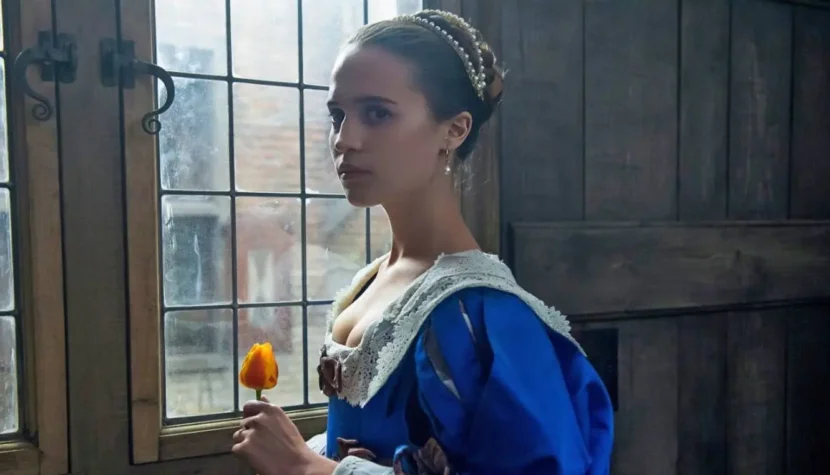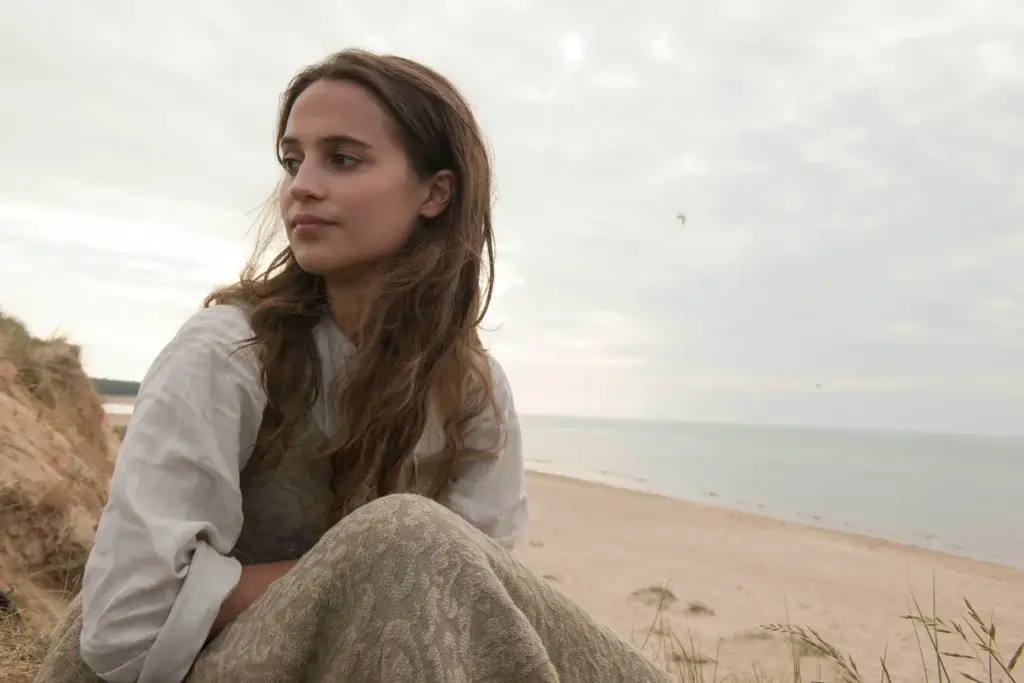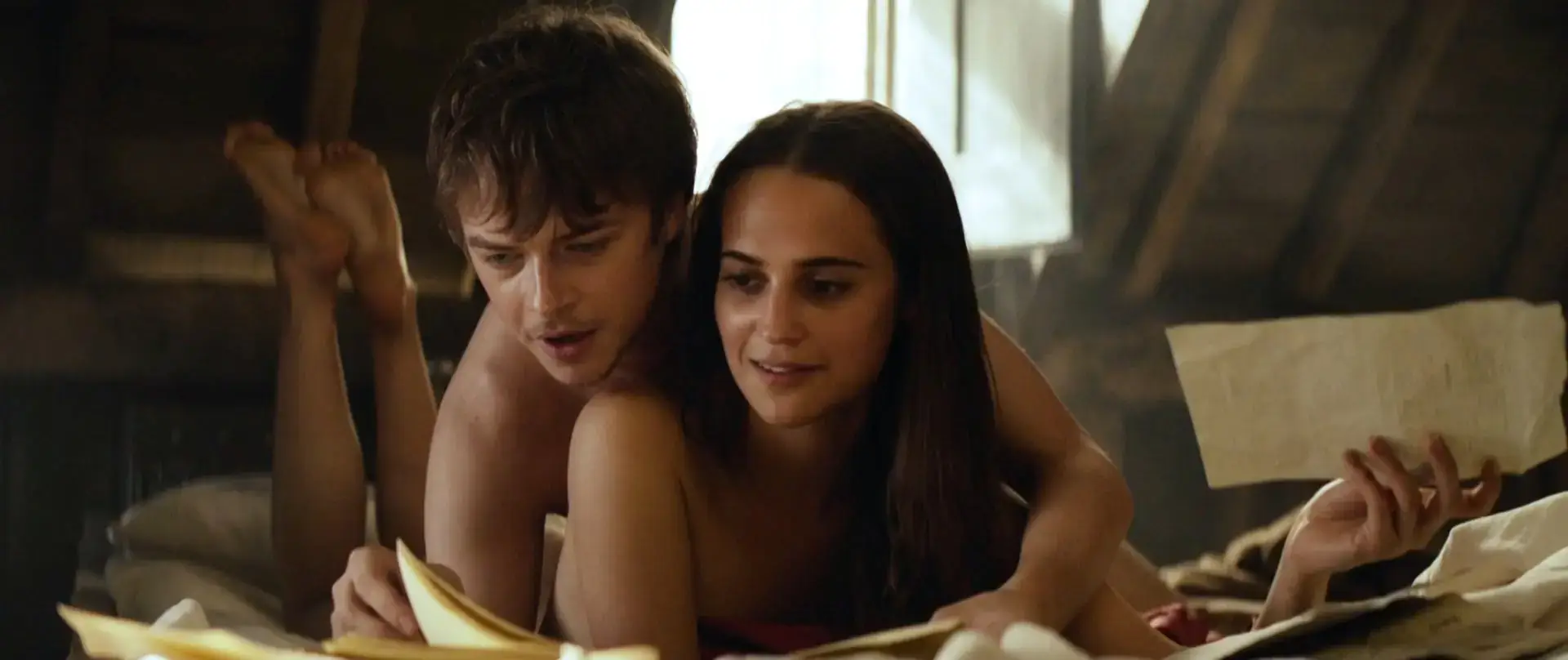TULIP FEVER. A Bulb with Layers

Among costume dramas, I most enjoy those that combine two elements. The first is a detailed recreation of a given era, especially its customs and daily life, because this allows one to feel, if only for a moment, what life might have been like at that time. The second is a well-crafted intrigue—closely tied to the realities and setting of the time—showing the possibilities and limitations of the period, while being as engaging as a good book. I don’t know if the novel “Tulip Fever” is like that, but its film adaptation offers a bit of everything. However, that doesn’t mean it’s stylish or balanced.
When the elderly, wealthy merchant Cornelis Sandvoort (Christoph Waltz) buys an orphan from an almshouse to be his wife, Sophia (Alicia Vikander), it seems that both their fortunes are about to change for the better. He will finally have an heir—preferably a male one—and she will live in a beautiful house as the lady of the estate. Unfortunately, the reality of life turns out to be unbearable: the dresses don’t bring joy, the rooms are dark, and the nightly duties only please Cornelis. Worse, his regular efforts fail to result in Sophia’s pregnancy, which becomes a serious problem for the childless man. A breath of fresh air arrives with the visit of a young, promising painter, Jan Van Loos (Dane DeHaan), who is tasked with painting the couple’s portrait. The artist is captivated by Sophia. At first, she doesn’t know what to make of it, but she eventually reciprocates his feelings. This leads to a passionate, of course forbidden, romance between the young lovers, which the old Cornelis doesn’t notice. Neither do most viewers, as the entire first part of the film drags so terribly that some might be tempted to take a nap. However, it’s worth sticking around because just when it seems like the plot will remain dull and predictable until the end, “Tulip Fever” starts to pick up.

The creators remember not only the secondary characters but also the other plotlines that had been pushed into the background. Suddenly, the character of the maid, Maria (Holliday Grainger), becomes significant, as does her lover, Willem (Jack O’Connell), a fish seller who, in an attempt to secure his future, tries his luck by investing in the tulip market mentioned in the film’s prologue. This is undoubtedly the most interesting part of the film, as the underground trading of tulip bulbs connects almost all the characters, from the painter Van Loos to the abbess of the Ursuline convent (Judi Dench). This section is the most enjoyable to watch, with room for gambling, both minor and major frauds, and surprisingly, a lot of humor, which works even better because it’s unexpected and clever—something that cannot be said about Sophia’s romantic and social struggles in the first part of the film. Shifting the focus from the romantic subplot to the tulip intrigue would have made the story much more interesting and dynamic, at times almost like something from a Guy Ritchie film. However, with each new subplot, the story becomes more chaotic.
After two sections—the melancholy-sentimental and the lively-market-focused—comes the third and final one, where the creators attempt to tie all the elements of the film together. Their good intentions and determination are evident, but unfortunately, not all of their efforts are successful. There are painterly shots, and the costumes and props capture the spirit of the era, but there are perhaps too many details, which at times distract from the plot. There’s more to admire visually than there is to emotionally engage with. The characters’ appearances are often more interesting than their dialogues, something the cast seems to have realized, as none of them delivered a career-defining performance in this film. Even the genre scenes—mixing pigments, the stages of painting a portrait, or explaining the symbolism of still life in the painting—are intriguing but very brief. There are no small masterpieces here like the scene depicting the making of an etching in Milos Forman’s “Goya’s Ghosts” or the preparation of paints in Peter Webber’s “Girl with a Pearl Earring”. Incidentally, “Tulip Fever” shares many similarities with the latter: a similar time period, the same country, a woman of low status posing for a portraitist and ending up in a romance, Joanna Scanlan’s presence, and the painterly quality of the shots. However, it falls short in every respect, as it lacks the most important element: it’s not interesting.

“Tulip Fever” is a film that unfolds like the titular flower. From a common and banal bulb, a more colorful and intriguing form emerges, but unfortunately, it’s fleeting and soon fades away without a trace.

